13.3: Visualización de Campo Escalar y Vector Bidimensional
- Page ID
- 115873
Trazar campos escalares y vectoriales en Python es sencillo, siempre y cuando el espacio sea bidimensional. Aquí hay un ejemplo de cómo trazar una gráfica de superficie 3-D:

El campo escalar\(f(x,y) = \sin{\sqrt{x^2 + y^2}}\) se da en el lado derecho de la parte zvalues. El resultado se muestra en la Fig. 13.3.1.
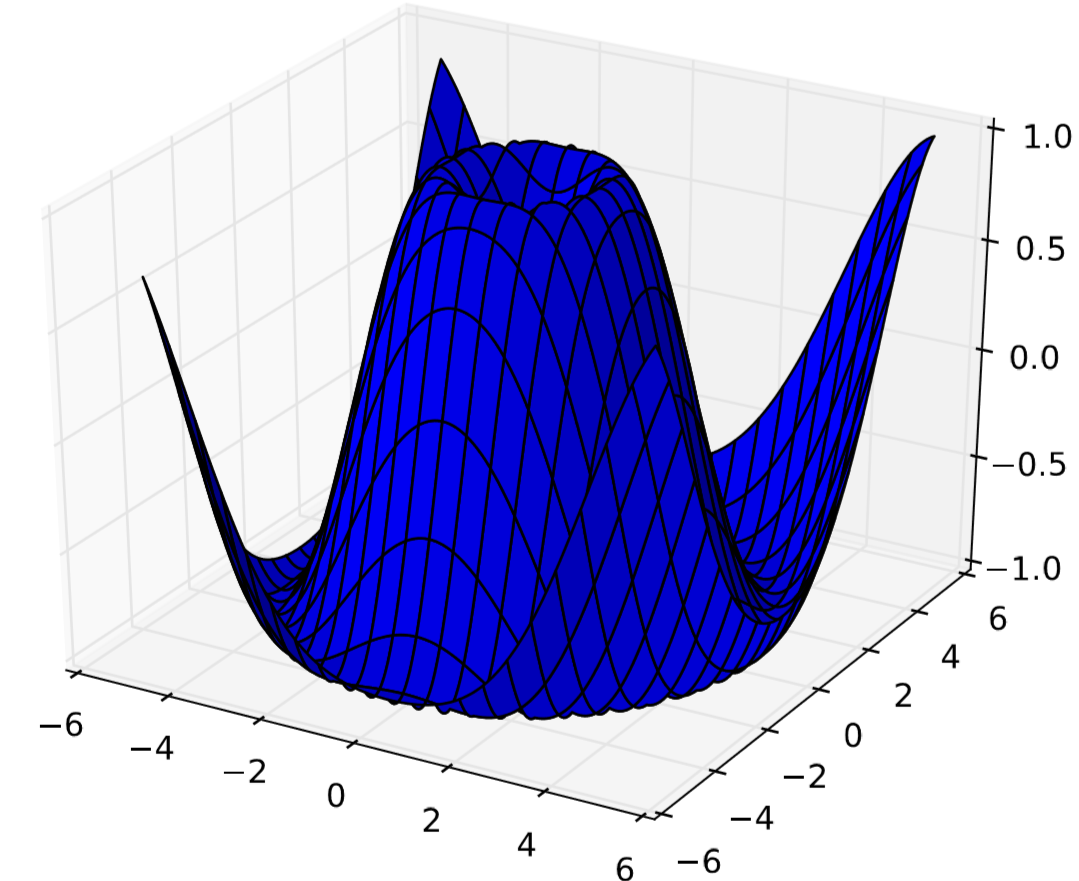
Y aquí está cómo dibujar una gráfica de contorno del mismo campo escalar:
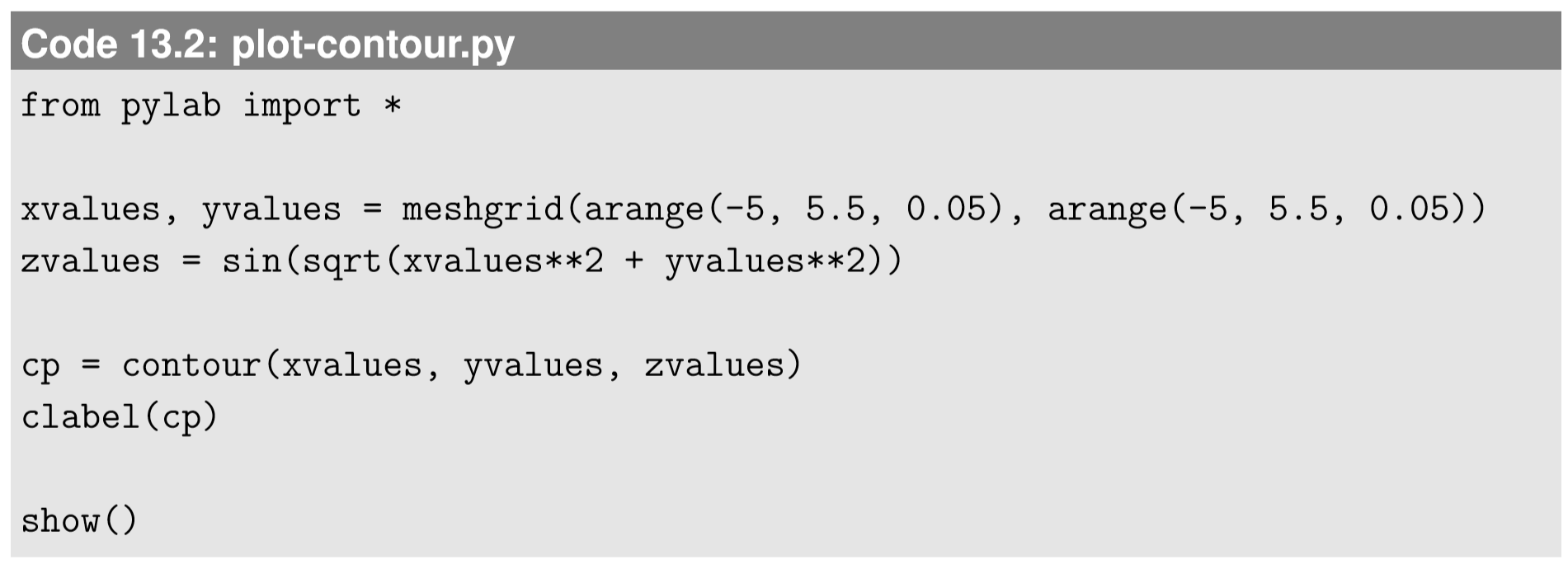
El comando clabel se utiliza aquí para agregar etiquetas a las curvas de nivel. El resultado se muestra en la Fig. 13.3.2.
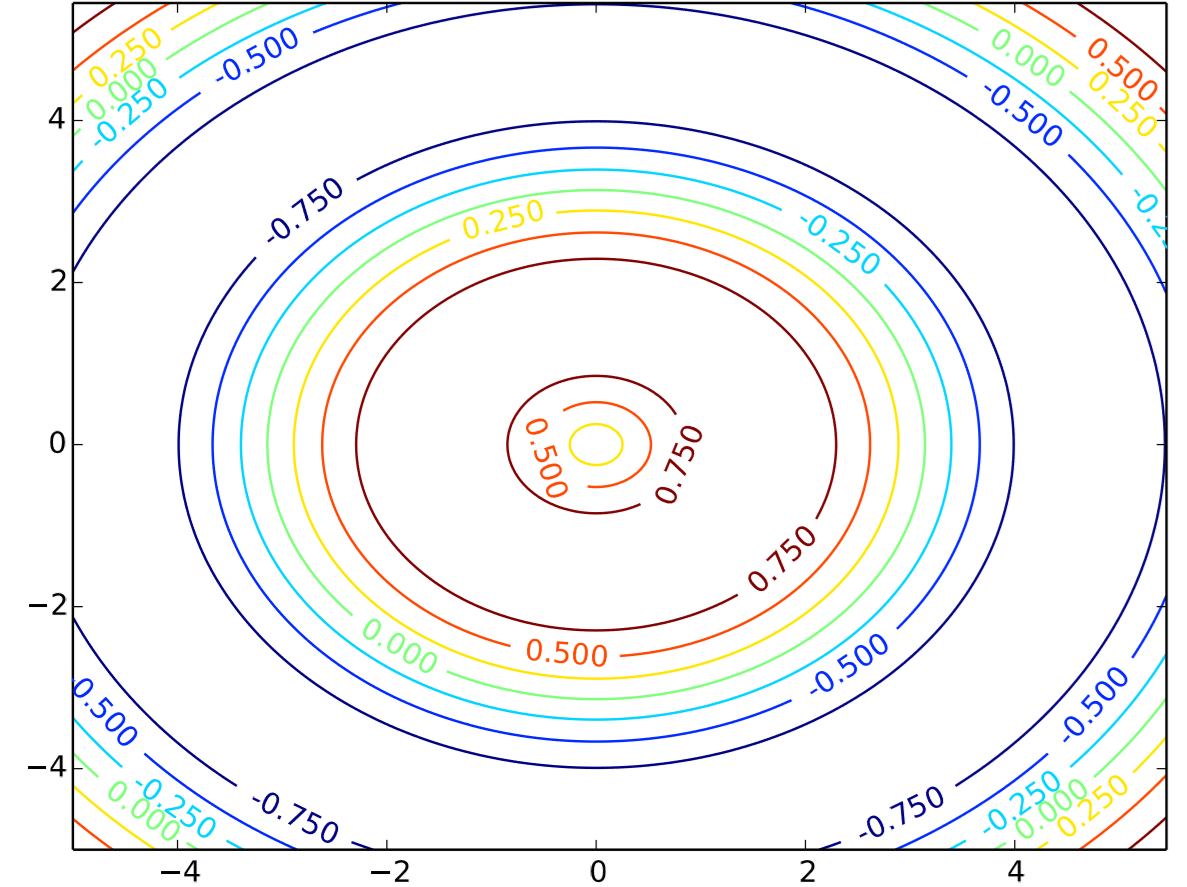
Si quieres más color, puedes usar imshow, que ya usamos para CA:


El resultado se muestra en la Fig. 13.3.3. ¡Colorido!
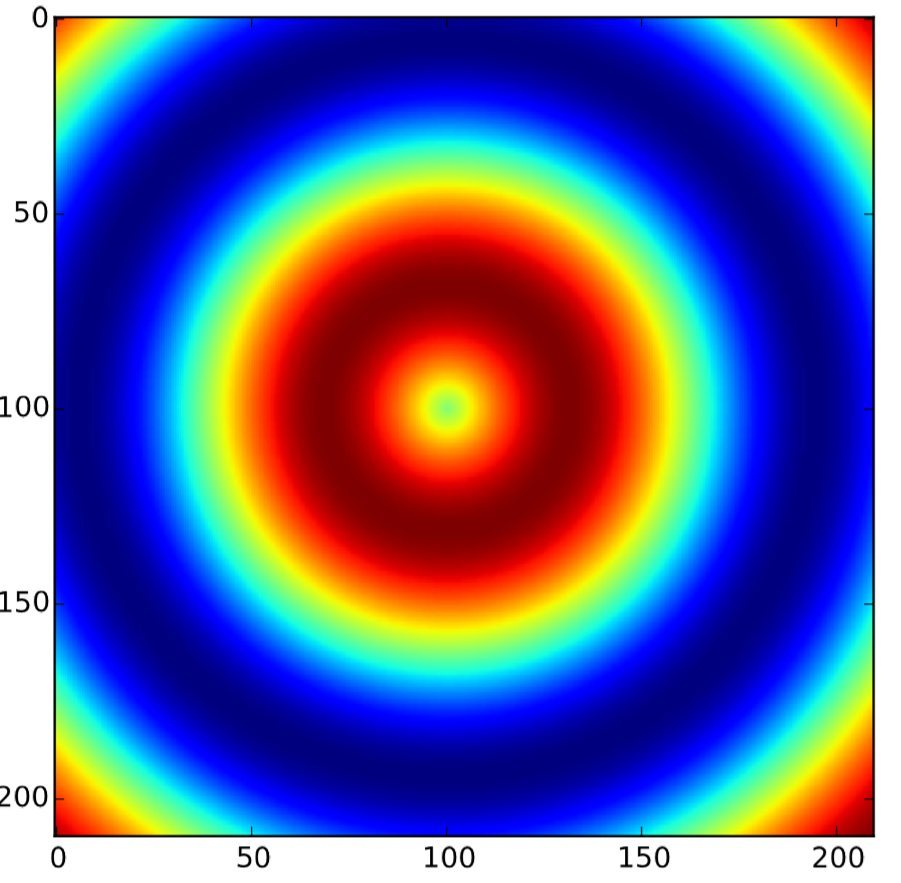
Finalmente, se puede visualizar un campo vectorial bidimensional usando la función streamplot que usamos en la Sección 7.2. Aquí hay un ejemplo de la visualización de un campo vectorial v = (vx, vy) = (2x, y−x), con el resultado mostrado en la Fig. 13.3.4:


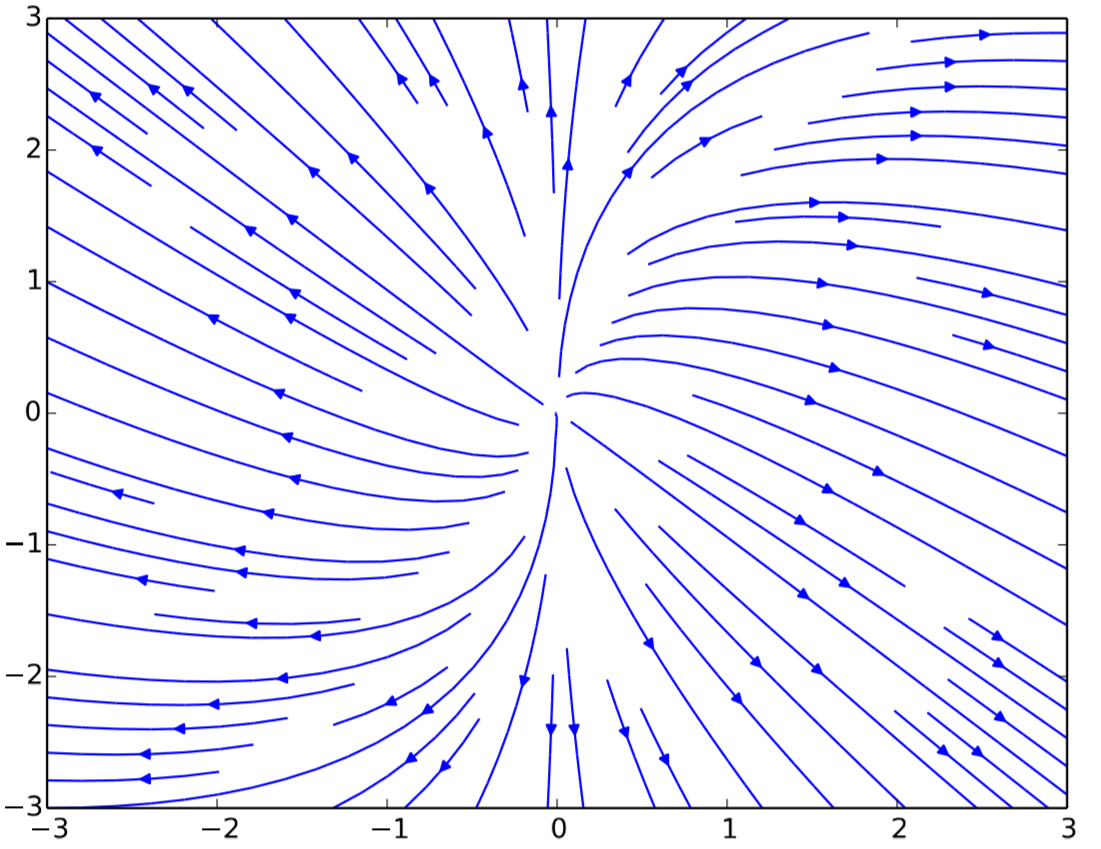
Trazar el campo escalar\(f(x,y) = \sin{(xy)}\) para\(−4 ≤ x,y ≤ 4\) usar Python.
Trazar el campo de gradiente de f\((x,y) = \sin{(xy)}\) para\(−4 ≤ x,y ≤ 4\) usar Python.
Trazar el Laplaciano de\(f(x,y) = \sin{(xy)}\) para\(−4 ≤ x,y ≤ 4\) usar Python. Compara el resultado con los resultados de los ejercicios anteriores.

